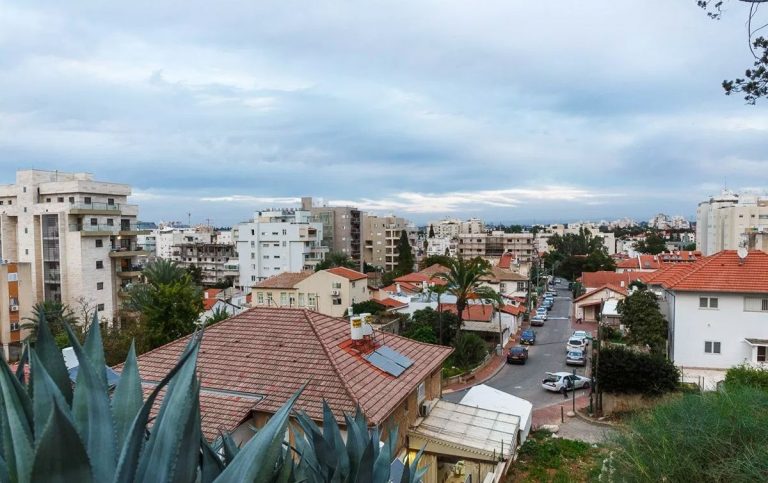 |
| view of Rehovot, courtesy, JoysOfTraveling.com |
During the time of Joshua, the site of
Rehovot was allotted to the tribe of Dan. According to some archaeologists and
historians, and subject to debate, this place was referred to as Keren Doron as
mentioned in the Jerusalem Talmud (Peah 7:4) and it had remained inhabited by
Jews and possibly Samaritans up until the Roman and Byzantine periods. (Later
Arab settlers referred to it as “Khirbet Deiran”.) By the beginning of the
Zionist era in the early 1880s, this region was an uncultivated wasteland with
no trees, houses or water. In 1890, the modern city of Rehovot was established
by BILU pioneers of the First Aliyah from Poland and headed by Rabbi
Samuel Mohilever. It was on the coastal plain near Khirbat Deiran on land purchased from a Christian Arab from
Jaffa on behalf of the Menuchah v’Nahalah Society of Warsaw. Israel Belkind, the founder of the BILU movement,
proposed the name "Rehovot" based on Genesis 26:22: "And he called the name
of it Rehovot; and he said: 'For now the Lord hath “made room”
(hiRHiV) for us, and we shall be fruitful in the land'." This Bible
verse is also inscribed in the city's logo. However, archaeologists have
located the Rehovot referred to, as in the Negev
Desert south of Beersheba.
Since the other Jewish communities were
financially supported by the Baron Edmond de Rothschild, Rehovot was the first
one established independent of his support. At
first the Turkish government hindered the development of this community by
placing obstacles in its way; but in 1894, the friction between the authorities
and the pioneers having somewhat abated, Rehovot began to thrive. The Jewish
Colonization Association granted the community a loan of 125,000 francs
($25,000) and houses were built along two parallel streets: Yaakov and Binyamin Streets. A fine vineyard was then laid out by Jewish
day-laborers, containing 250,000 vines and there were also a great number of
almond, mulberry, and other trees as well as cereals but the inhabitants
had to grapple with agricultural failures, plant diseases, and marketing
problems. The town’s synagogue was
established in 1903. The first citrus grove was planted by Zalman Minkov in
1904. Today, the Minkov Orchard Museum
was built on the site by his descendants who now live in Switzerland. In 1908,
the Workman's Union (Hapoel Hazair)
organized a group of 300 Yemenite immigrants then living in the region
of Jerusalem and Jaffa, bringing them to work as farmers in the town resulting
in a few dozen families settling there. They built houses for themselves
in a plot given to them at the south end of the town, which became known as Sha'araim. In 1910, Shmuel
Warshawsky, with the secret support of the Jewish National Fund,
was sent to Yemen to recruit more agricultural laborers. Hundreds arrived beginning
the next year and were eventually housed in a large extension of the Sha'araim
quarter.
In 1920, the Rehovot Railway Station was
opened, which greatly boosted the local citrus fruit industry. A few packing
houses were built near the station so as to enable the fruit to be sent by railway
to the rest of the country and to the port of Jaffa for
export to Europe. By 1931, Rehovot became connected to Palestine’s electricity
grid, then owned by engineer Pinhas Rutenberg. That same year, the first
workers’ moshav, Kfar Marmorek, was built on lands
acquired by the Jewish National Fund in
1926 from the neighboring Arab village Zarnuqa, in which ten Yemenite Jewish families, evicted from Kinneret, were resettled to work the land. They
were later joined by thirty-five other families from Sha'araim. Today, it is a
suburb of Rehovot. The agricultural research station that opened in 1932 became
the Department of Agriculture of
the Hebrew
University of Jerusalem. In 1934, Chaim Weizmann established the Sieff
Institute, which later became the Weizmann
Institute of Science. In 1937, Weizmann built his home on the land purchased adjacent to the Sieff
Institute. The house later served as the presidential residence after Weizmann
became president in 1948. He and his wife are buried on its grounds.
Under the UN Partition Plan in 1947 which
began the War of Independence, Rehovot was included in the proposed Jewish
state. During the war, on February 29, 1948, the Lehi blew
up the Cairo to Haifa train shortly after it left Rehovot,
killing 29 British soldiers and injuring 35. Lehi said the bombing was in
retaliation for the Ben Yehuda Street
bombing in Jerusalem a week earlier, led by Arabs but assisted
by some British soldiers. On March 28, Arabs attacked a Jewish convoy near
Rehovot. After the war, the town expanded and in 1950, Rehovot, which had a
population of about 18,000, was declared a city. The Kaplan Medical Center was
founded three years later and at present, acts as an ancillary teaching
hospital for the Hebrew University Medical School.
The city has had three football clubs
representing it in the top division of Israeli football: Maccabi Rehovot (est.
1912) between 1949 and 1956, Maccabi Sha'arayim (est.
1950) between 1963 and 1969 and again in 1985, and Hapoel Marmorek (est.
1949) in the 1972–73 season.
Rehovot is also home to numerous industrial
plants, and has an industrial park in
the western part of the city. This park includes the Tnuva dairy plant, the Yafora-Tavori beverage factory, and the
Feldman ice cream factory. The Tamar Science Park, established in
2000, is a high-tech park of 1,000 dunams at the northern entrance of the city
and adjoins the older Kiryat Weizmann
industrial park. The Weisgal Center
Water Park is located in the south of the city. The Peres Academic Center College was established in 2006.
Today, there are three significant Jewish ethnic minorities in Rehovot: Russian Jews, Yemenite Jews, and Ethiopian Jews, concentrated largely in the Kiryat Moshe and Oshiot areas. In addition, there is a growing religious community from English-speaking countries who primarily live in Northern Rehovot around the Weizmann Institute.
